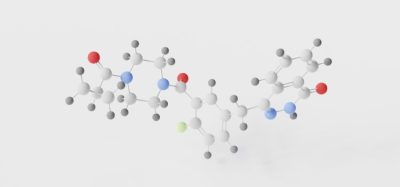Global peripheral artery disease treatment market to peak in 2020
Posted: 19 October 2015 |
The global treatment market for peripheral artery disease will hit a peak of $983.6 million in 2020, before falling to $816.3 million by 2024 due to the generic erosion of Brilinta and Xarelto…


The global treatment market for peripheral artery disease will expand in value from approximately $543.4 million in 2014 to a peak of $983.6 million in 2020, before falling to $816.3 million by 2024 due to the generic erosion of Brilinta and Xarelto, according to research and consulting firm GlobalData.


The Company’s latest report, PharmaPoint: Peripheral Artery Disease — Global Drug Forecast and Market Analysis to 2024, states that the initial dramatic increase in the value of the overall global PAD therapeutics space, which covers the eight major markets (8MM) of the US, France, Germany, Italy, Spain, UK, Japan, and urban China, will be partly attributable to the launch of several highly promising PAD drugs currently in late-stage pipeline development.
Shaan Thakerar, MSc, GlobalData’s Senior Analyst covering Cardiovascular and Metabolic Disorders, says three novel antithrombotic pharmacological agents, namely Merck & Co.’s Zontivity (vorapaxar), AstraZeneca’s Brilinta (ticagrelor), and Bayer and Janssen’s Xarelto (rivaroxaban), all have the capacity to reform the antiplatelet and anticoagulatory peripheral artery disease treatment landscape.
Thakerar comments, “The antithrombotic agents Xarelto, Zontivity, and Brilinta will bring new drug targets and novel mechanisms of action to the arsenal of long-term blood-thinning treatment strategies.
“The unveiling of Xarelto into the anticoagulant therapeutics space for PAD will mark the biggest step forward in the anticoagulant market since warfarin, but will come without the liabilities of its first-generation predecessor.”
The analyst adds that Brilinta, a first-in-class nonthienopyridine, will eventually displace clopidogrel, a second-generation thienopyridine, in the peripheral artery disease treatment paradigm by 2024.
Peripheral artery disease market predicted to become increasingly genericized
However, while the antithrombotic space is brimming with competition, GlobalData anticipates that the global antiplatelet and anticoagulant markets in peripheral artery disease will become increasingly genericized, progressively more saturated, and challenging to penetrate.
Thakerar continues: “Current pipeline agents, such as Brilinta and Xarelto, will eventually lose market exclusivity and patent protection, and these drugs will ultimately relinquish their stake in the peripheral artery disease marketplace to cheaper, generic copycats in most of the 8MM.
“During the forecast period, growth in the peripheral artery disease therapy market will also be hindered by the existence of cheap and established generic drugs, including aspirin, clopidogrel, and warfarin, as well as limited physician uptake of Brilinta, Zontivity, and Xarelto due to the heightened risk of bleeding associated with these treatments.”








